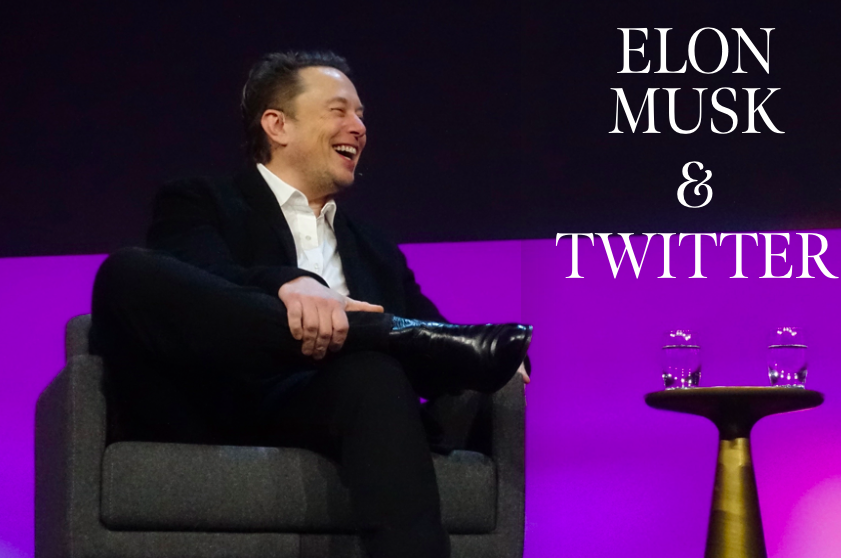“What’s next?” tends to be the question on everyone’s lips during a company takeover. New ownership often brings new promises, new ideas and new ways of doing things. All of this has the potential to deliver momentous change, creating excitement and trepidation in equal measure, and fuelling second-guesses about what the future might hold.
Attention and energy can quickly shift to the medium and long term, casting a shadow over the many priorities that exist in the present and which can prove a defining moment for a CEO. This set of circumstances has been turbocharged during Elon Musk’s intended takeover of Twitter and epitomises the complexities faced by a CEO as they aim to successfully navigate change.
Musk’s initial $44billon bid for the social media company was accompanied by pledges from the entrepreneur of less censorship, a crackdown on scams and bots and moving Twitter to an open-source algorithm. These promises are being made in a bid to ‘make Twitter better than ever’.
Potential wave-making pledges were then followed by a rather unexpected curveball when Musk suddenly put the brakes on the deal. At the time of writing, the entrepreneur’s view is that the deal ‘cannot move forward’ until Twitter provides proof about the presence of fake accounts on the platform.
Uncertainty of this kind is not unusual during a deal. It’s a typical part of takeover negotiations and fuels the ‘what’s next?’ challenge that an existing CEO has to effectively manage. Current leadership must sharpen the company’s focus on prevailing goals and strategies, with the validity of these reinforced amongst employees and stakeholders. Teams need to believe what they’re doing and stiving towards everyday remains relevant, otherwise, a CEO will face a rapid decline in performance.
This challenge has been intensified for Twitter CEO Parag Agrawal. The bold, publicly communicated pledges and vision communicated by Musk, as he made his initial bid for Twitter, risk undermining the strategy and achievements of the social media’s existing senior leadership and severely damaging confidence in the CEO. It can erode any belief amongst employees and other stakeholders about the importance of their work and create a perception that existing leaders aren’t the right people for the business. This often proves divisive and quickly breeds a culture of self-preservation, making it extremely difficult for a CEO to maintain cohesion, and to control the forward momentum of the company.
The battle to retain confidence and control has been made even more complex for Parag Agrawal. He’s had to contend with public rumours that a replacement CEO has already been lined up by Mr Musk, as well as lingering questions about potential cost-cutting and staff layoffs if a takeover is completed.
To address challenges, Mr Agrawal must focus on the here and now by prioritising the interests of the business and putting these before any personal motivations. This involves embracing possible change and actively finding synergies between any new ownership regime and what has gone before. It could seem to make more sense to disregard or delay this approach, especially if a takeover hits the buffers. However, by taking earlier action, a CEO is more likely to find shared interests between old and new. This could prove successful in making them part of the company’s future, or at the very least, minimise any turbulence around their exit.
Establishing synergies between old and new enables a CEO to effectively determine their own destiny and legacy.
By finding shared interests, a CEO will also find a starting point for taking employees and stakeholders on the takeover journey. Common ground can be established, which will help make change more understandable and palatable. This should involve a dialogue with all affected parties, ensuring there are clear lines of communication for people to voice any concerns and have their questions answered.
Taking this approach will help avoid any resistance to change from festering and becoming increasingly explosive. It may mean that some people decide to leave as the vision for the business changes. This shouldn’t be viewed negatively though, as it leaves opportunity to bring in new talent who may be more aligned with the future vision. Ensuring existing employees have a positive experience on their way out of the business will be more important than ever.
Establishing synergies between old and new enables a CEO to effectively determine their own destiny and legacy. A new owner will have a keenness to fully understand the macro and micro impacts of their proposed changes. Drawing on the insight and experience of an existing CEO will prove extremely valuable to this process.
Whilst a CEO can provide the new owner with knowledge about the inner workings of the business, it also invites conversation that will enable the CEO to determine whether they fit with the future direction of the business. Such clarity will help empower a CEO to make decisions and take the next steps more on their terms. For example, any speculation about leadership changes can be quickly clarified to minimise assumptions and any reputational damage.
Similarly, a CEO who is clear on where they are heading will also hold more authority, both in the short and long term. They can more effectively outline plans for their tenure and manage expectations, which will reinforce trust and confidence in them as a leader. Being able to build trust can make or break a CEO and a change in leadership will not change this.
About the Author
Doug Baird is the CEO of New Street Consulting Group.











